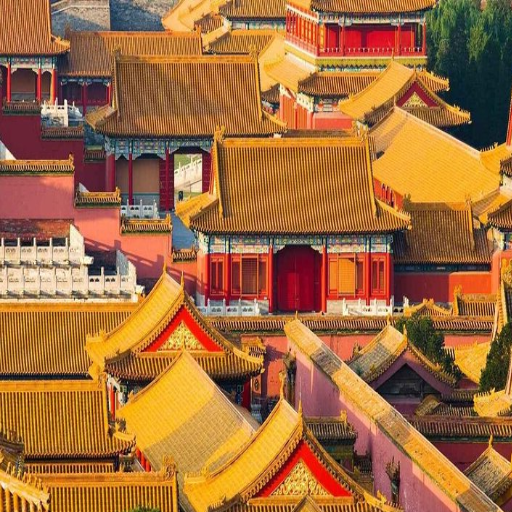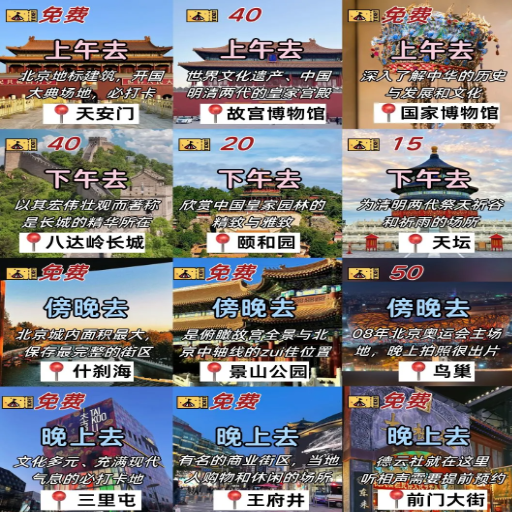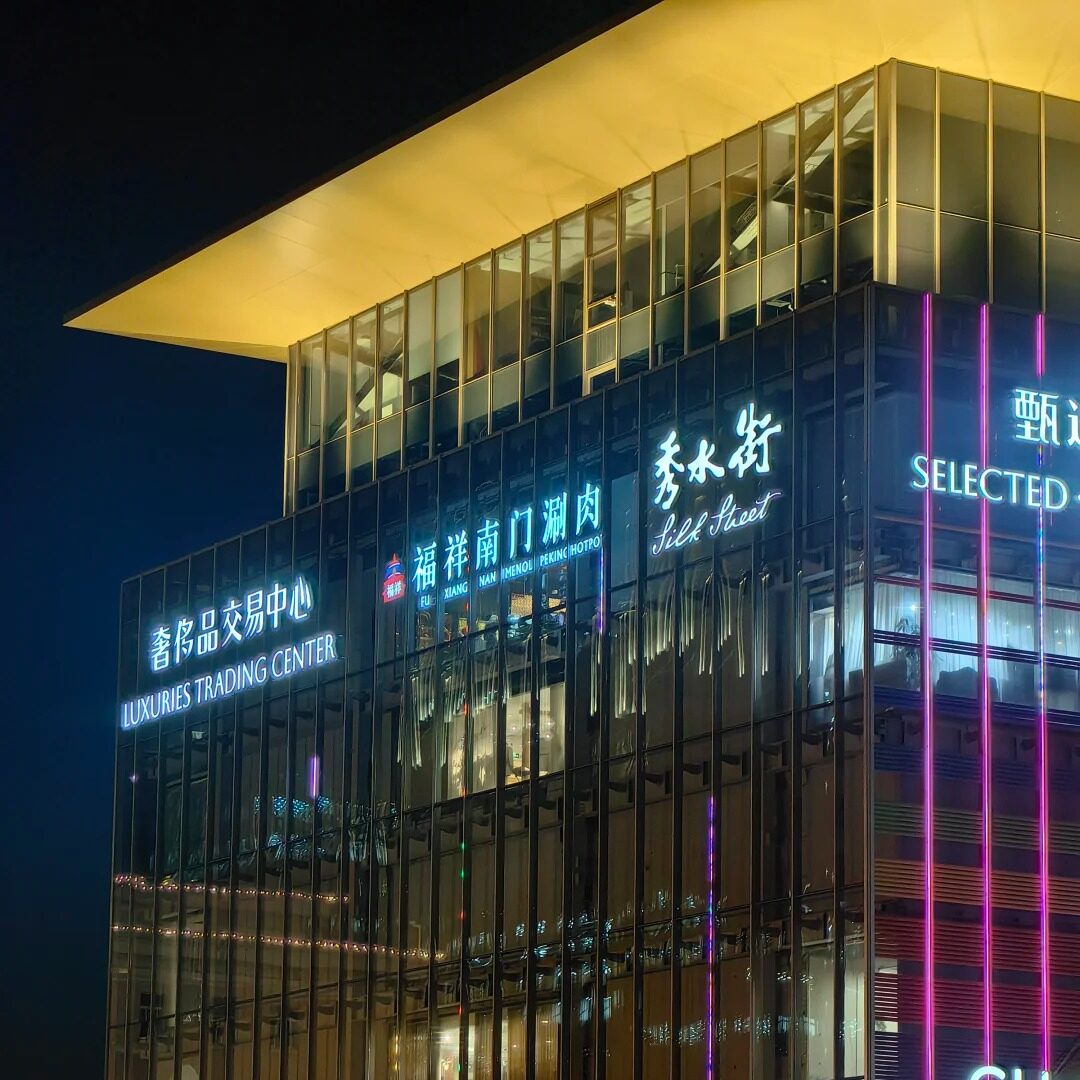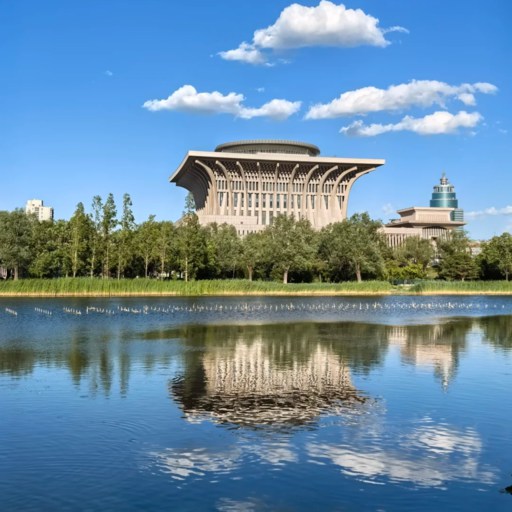Entering through the entrance of the Forbidden City is akin to journeying back in time to the heart of China's imperial history. The sprawling palace complex, which served as the home to emperors and their courts, is a masterpiece of ancient architecture and culture. Unlocking its secrets through a private tour allows one to access stories concealed beyond its intricately carved halls, majestic gates, and courtyards. This unparalleled experience is bound to engage anyone, whether a history buff, a lover of architectural marvels, or one who wishes to view an internationally renowned landmark—soak in the mysteries of Beijing and heritage unlike any other.
What Can You Expect from a Tour of the Forbidden City?

Why Choose a Private Tour?
Somebody who chooses a private tour to visit the Forbidden City has a distinct choice regarding how they explore this historic wonder. The mastery that many private tours have is to go deep into the details and stories that explain the site, which is usually neglected in group tours. Private tours focus on specific information a client wants to know, which makes it different from group tours, where limited questions are entertained. Specific interests only add to the client's frustration. With a personal tour, you have a guide who has in-depth knowledge about the complex and answers your questions about its history, culture, architecture, and even the literature behind it. Visiting with a guide helps you know the different angles and dimensions of the site that you would have missed without a guide. Thus, their history is known in detail. This tour aids clients in understanding the intrigues of the emperors and the concubines who resided there.
Also, the convenience of a private tour means that you easily avoid the overwhelming throngs of people visiting this famous site, making it easier to focus. Many private tours have additional benefits, like visiting the site before public opening hours or going to places that are not accessible on regular tours. This customization makes it much easier to engage with Ming and Qing dynasty architecture or the interests of imperial China traditions. However, a private tour of the Forbidden City will always be the optimal method of traversing through the UNESCO World Heritage Site for someone looking for a customized exploration of history.
Highlights of the Forbidden City
Architectural Grandeur: The Forbidden City is the zenith of traditional Chinese palace architecture, covering over 180 acres and almost 1,000 structures. Its systematic plan follows antiquated philosophical rules and demonstrates symmetry, which is fundamental to Chinese civilization.
Hall of Supreme Harmony: This splendid structure is the grandest wooden palace globally. It hosted various ceremonies and enthronements during the empire’s reign. The finely detailed dragon carvings, a crucial part of the sitting throne and the roof, showcase the reverence Chinese emperors received and their cosmological importance.
Cultural and Historical Artifacts: The Palace Museum, part of the Forbidden City, has over 1.8 million items, including paintings, ceramics, calligraphy, and jade pieces, spanning several years of Chinese history. Qing-era enamelware and Song-dynasty ceramics are some examples of China’s refined past that showcase, with great skill, the lavishness of bygone dynasties.
Imperial Garden: This calm area, found at the northern end of the Forbidden City, contains wondrous ancient trees alongside complex pavilions and epic rock formations. These features make this region an ideal retreat for the emperors and their families. The garden also illustrates the harmony between nature and human skills, which is the very essence of Chinese gardening.
Gate of Heavenly Purity (Qianqingmen): This gate accesses the inner court, indicating a shift from public to private sections of the imperial palace. Its bold architectural details and rituals, which have facilitated countless state functions, make it an important site to include during any visit.
Restoration and Preservation Efforts: To protect its cultural heritage, meticulous restoration activities are underway to preserve the structures and artifacts for future generations. Advanced methods analyze and maintain the site in a manner that does not diminish its value.
The Forbidden City is an incredible masterpiece, providing customers unique access to China's civilization. It reveals traditions, art, and creativity that attract visitors from around the globe.
Visiting the Palace Museum and Treasure Gallery
Palace Museum and Treasure Gallery, placed within the soaring boundaries of the Forbidden City, offer an astonishing view of the lavish lifestyle of the Chinese emperors and the delicate works done by the ancient craftsmen. The Palace Museum contains more than 1.8 million pieces of artwork, which include paintings, ceramics, calligraphy, and bronze work from thousands of years ago. These works embody China’s artistic and creative monuments, revealing their art history and cultural development.
The eastern part of the city houses the Treasure Gallery, which concentrates on prized imperial objects, including jade carvings, gold jewelry, and other ceremonial objects of the royal family. Some showcased items, like the gold crowns and jade seals, portray ancient Chinese goldsmithing and jade carving with astonishing detail and craftsmanship. Visitors can appreciate curated exhibits whilst following stories about the lavish royal rituals, ceremonies, everyday life, and the luxurious objects they housed. These spaces, as a whole, provide China’s immeasurable insight into its historical wonder alongside rich artistry to bring pilgrims and visitors new wonder towards imperial China.
How to Plan Your Beijing Day Tours?

Drafting The Ideal Itinerary
Memorable day tours of Beijing require a comprehensive understanding of the city's culture and flexibility in logistics and planning. To grasp China's imperial history, prioritize the Forbidden City and the Temple of Heaven. These places are near each other. Centering Your Tour. These landmarks are a must-visit for any traveler trying to grasp China’s imperial history. All these destinations are near Beijing, aiding in a smooth travel experience when visiting together.
Exploring the Great Wall of China is best done early in the morning to immerse oneself in the magic, away from the crowd. For families with kids, Mutianyu is both scenic and child-friendly. Culturally themed neighborhoods like Nanluoguxiang or 798 Art District are vibrant with life, contemporary art, and require leisure time. That snack break you didn’t know you needed? Now.
Beijing’s advanced subway system will aid in maintaining your schedule while covering ground as the city sprawls out. Be conscious of the most efficient times for visiting each attraction, and if they allow for advanced ticket sales, book to avoid long queues. Lastly, leave time for all the delicious local restaurants serving authentic Beijing cuisine with surprise stops to quiet courtyard gardens scattered in the bustling city. An itinerary helps to find the right balance between order and structure in this stunning city.
When to Visit Beijing City and the Forbidden City
For weather reasons, the best time to visit is April to May and September to October. These months have less rainfall, milder temperatures, and increased humidity than spring and autumn, making them great travel periods. Also, strolling during autumn with the golden leaves is picturesque for long walks.
April to May and September to October are regarded as peak tourist seasons. Hence, they are the best times to visit Beijing's fascinating parks and gardens. Mid-to-late summer can be hot with a high presence of tourists, while October remains relatively calm. Additionally, avoiding travelling during the Okt Golden Week is essential as it is a busy Kupicaçãoidredsme.
For the palace, weekdays, specifically early morning hours, are ideal for tourists. This complex has thousands of visitors daily, making a prior reservation critical. Pay attention to Jo Meide, as attendance without notice may lead to dreaded queues. With these tips in mind, tourists are highly sought after, while fewer people visit the attraction.
In Combination with the Great Wall Tour
Combining a visit to the Great Wall with a tour of the Forbidden City is recommended to grasp China’s wonderful history fully. The sections of the Great Wall that can be reached from Beijing include Badaling, Mutianyu, and Jinshanling. Each of these has its own unique advantages. The Mutianyu section is famous for its better construction and lower crowd volumes for a more laid-back yet beautiful exploration.
For the best experience during the combined tour, visit the Forbidden City in the morning and save the Great Wall for the afternoon. Both areas have a lot of guided tours, which help with transportation between the places, making it easier for tourists. To make your trip even more exciting, take the cable car at Mutianyu or hike the steep trails at Jinshanling to experience more of this architectural wonder. Combining these famous destinations into one schedule allows travelers to appreciate China’s ancient beauty and rich heritage in a single visit.
How to Book Your Private Tour?

Where Can You Get Tickets for The Forbidden City?
To visit one of the most important sites in China, booking tickets for the Forbidden City is very simple. Booking in advance through the official reservation system provides the most convenient and reliable ticket access. Alternatively, some travel companies have tickets available and offer guided tours that provide historical context and a detailed review of the site's artistic and structural elements.
It is good to realize that the Forbidden City has a ticket-only policy allowing limited admissions to help manage the visitor experience and the preservation requirements of this world heritage site. Reservations are made available for purchase ten days in advance; however, during peak seasons, these tickets are highly sought after, so booking ahead of time is crucial. Visitors must present valid government-issued IDs, which will be checked at the entrance. Following these guidelines enables effortless planning to visit this iconic destination as part of your travel itinerary.
Explaining Free Cancellation Policies
For travelers, free cancellation policies are crucial because they allow for the alteration of plans. These policies generally enable customers to cancel their reservations without any penalties if they follow the service provider's terms and conditions. The guidelines for cancellation or eligibility for a full refund vary per the service provider's policy. They may include: the timing of the cancellation, the type of booking made, etc. For instance, accommodations usually require a 24 to 48-hour prior notice for cancellations. Airlines have their own policies on free cancellations, which are often limited to a short time frame.
An analysis of the booking and reservation sector shows a notable preference for accommodating flexible cancellation policies. Most providers in the travel sector are responding to the needs of the consumers. To increase consumer trust and invite more bookings, most service providers have initiated “no-fee cancellations” as part of their policies. It is, however, recommended to check for the fine print as some refunds do not equate to direct payments. Vouchers or credits are provided instead. Understanding the above factors enables the traveler to plan their bookings with trust.
Choosing the Best Tour Guide For Your Travel Experience
Making the right choice with a tour guide sets the right pace for an excellent travel experience. Traveling with a skilled and experienced guide makes it easy to appreciate the area's cultural, historical, and traditional facets. Start by checking search engines for guides and agencies with admirable reviews, as travelers’ comments provide much information about their reliability and expertise. Reputable guides also have certifications from recognized bodies, which depict their commitment to maintaining high standards.
Personal interests and preferences should also be taken into account. Some focus on historical landmarks while others focus on nature or food excursions. Ensure you communicate your expectations so the guide can adjust the tour to your specifications. Proficiency in the desired language is critical, so ensure the guide speaks well. Do not shy away from seeking information about group limitations and pacing, since small groups make the tour behave in a personalized manner, which enhances satisfaction and gratification. Considering these points will enable you to choose a tour guide who improves your travel experience.
What Are Other Must-See Beijing City Attractions?

Visiting Tiananmen Square
Tiananmen Square is the center of Beijing and is among the largest public squares in the world. It provides many national and cultural events in China. Covering an area of 109 acres, it also had political significance in history and even now serves as a center for multiple activities in China. Looking from the South direction, you can see it's encircled by many monuments, making it a must-see attraction while visiting Beijing. The Monument to the People’s Heroes is in the center, which honors and pays tribute to the people who sacrificed their lives to achieve freedom and independence for China.
Tiananmen Gate (Gate Of The Heavenly Peace) is located at the Square's Northern end and is a must-see place. It has a huge portrait of Chairman Mao Zedong, a famous figure in Chinese history. The gate served as the front of the Forbidden City. To the South, it is bounded by the Mao Zedong mausoleum, which is dedicated to the founding father of China and allows visitors to pay respect. China's National Museum and the Great Hall are located on the East and West sides of the Square, showing a deep insight into the country's politics, culture, and art.
Tiananmen Square, Beijing, is not only a place of interest for locals and foreigners due to its rich culture and history; it is also an architectural marvel. If you wake up early or go to bed late, you can attend the flag ceremonies at these times and showcase the Chinese-born patriotism. Furthermore, the square enables you to ponder and appreciate China’s captivating history while taking in China’s symbolic city centerpiece.
Going to the Temple of Heaven and the Summer Palace
The Temple of Heaven is located in the southern part of Beijing. It is a UNESCO World Heritage site and considered one of China's wonders. It was constructed in the 15th century during the Ming and Qing dynasties. The vast temple complex served as a place of worship and offered sacrificial ceremonies for the Mongolian rulers. Visitors can see the impressive round Hall of Prayer for Good Harvests, constructed without nails; it even has an impressive Echo Wall that modern builders struggle to design. The area is surrounded by a park, which provides residents with modern exercise areas such as dance and tai chi.
The Summer Palace is located northwest of Beijing and represents a stunning example of Chinese landscaping art as an imperial garden. The centerpiece of the Summer Palace is Kunming Lake, which is traversed by arched bridges and is dotted with pavilions, making for incredible views and a peaceful atmosphere. Visitors can also enjoy walking along the Long Corridor and up to the Tower of Buddhist Incense located on Longevity Hill, which shows the artistic and cultural achievements of the Qing dynasty. Suzhou Street, a former market area, and boat trips on the lake are other ways to enjoy the breathtaking scenery and imperial lifestyle that is so extravagant. Visiting two parts of the Summer Palace allows one to experience ceremonial grandeur and tranquil nature in a single day.
Exploring Hutongs and the Local Culture
The Hutongs of Beijing are an indelible part of the city’s history. They have narrow streets, traditional courtyard residences, and a distinctive blend of modernity and vibrance. These neighborhoods showcase ancient daily life in China and are often centuries old. Walking through Hutongs like Nanluoguxiang or Shichahai makes it possible to appreciate how seamlessly life today weaves with history.
Tourists can wander through the intricate grid of streets to uncover family-run businesses, quaint local eateries, tea shops, and small restaurants offering authentic Beijing street food like jianbing and tanghulu. Many Hutongs offer cultural education with classes on paper cutting or courtyard opera, providing an immersion enriched by tradition. Additionally, locals are usually more than willing to provide their insights into the places, adding a personal touch to the exploration. Travelers can visit these neighborhoods to experience the city's gentle yet unending spirit and heritage in a profoundly personal way.
What Makes the Forbidden City a World Heritage Site?

Exploring the Deep History Behind the Forbidden City
Positioned in the center of Beijing, the Forbidden City is one of the most significant cultural symbols worldwide. When the Ming Dynasty came into rule between 1406 and 1420, The City became an imperial palace during the reign of 24 emperors from the Ming and Qing Dynasties. It covers roughly 180 acres of land and has almost a thousand buildings, which possess mind-blowing architecture, traditional Chinese gardens, intricate carvings, and exquisite, delicate features.
The site is enveloped by a massive ditch and protected by a thirty-foot wall, which acts as a boundary to the ancient spot, which held great political as well as historical value. This further marks the surface of the country’s border and boosts security. The site also showcases ancient architecture, embodying the three-layered kingdom of nature, earth, and humanity. Thus, it has made it a UNESCO World Heritage Site, proving its significance for Chinese civilization.
At present, the Palace Museum holds over a million pieces of art, including cultural artifacts, which preserve and illustrate the artistry and traditions that China formed and magnify its portrayal of China’s skillful history. Due to this, the Forbidden City acts as an effortless example of Chinese grandeur and craves many evidential documents regarding its state in the past.
Insights on the UNESCO Listing
The fact that the Forbidden City is inscribed on UNESCO’s World Heritage List attests to its unparalleled global value in culture and history. As far as I know, this inscription also marks the position of the Forbidden City as a stunning example of Chinese architecture and urban design. Ancient craftsmen and artisans greatly sophisticated the ingenuity employed in the Construction of the architecture and passageways of the City, which is done with symmetry. The intricate carvings and colors are done vibrantly. The UNESCO listing also supports that the site was the center of politics and ceremonies in China for the imperial ages. The site was a symbol of great historical continuity, blending cultures.
Moreover, the city's inclusion in the UNESCO World Heritage program allows it to gain protection and recognition at an international level. The status draws attention to the importance of preserving the delicate structure, priceless artifacts, and valuables from the hands of humans and nature’s wrath. I believe the Forbidden City listing reminds us how fragile and irreplaceable the cultural heritage is for the future to be excavated and appreciated. It offers excellent linkage for people from the past and people living now, creating an understanding of China's incredible history.
Experiencing The Heart Of Beijing At Its Landmark
Undoubtedly, exploring the heart of Beijing at its landmark is one of the journeys that people do not forget easily. Being amid such exquisite fusion of architecture and history was akin to being immersed in a time machine, a walk-through history on its pages. As I strolled through the Forbidden City, I could not help but notice the intricate and detailed designs done centuries ago, reflecting the true and pristine art of the Chinese civilization. The balance between tradition and functionality, for which this palace serves, is a cultural blend that it houses, which is so diverse.
The feeling of the Forbidden City is not only walls to imagine within its embrace. Throughout the expansive Royal Dwelling Complex, the hallways are filled with memories and echoes of the Emperors, officials, and their servants, bringing the spheres of China as we know it today to life. At the same time, the enormity and strength of that feeling is overwhelming, and would be an understatement, a reminder of quite the opposite – what shapes the present and the past. This visit was not only landmark chekcing, sightseeing. The rich narrative one gets through, which immerses one in a culture or identity, is truly remarkable.
I think the Forbidden City is a must-see for travelers in Beijing. It offers not only stunning sights but also a chance to participate in the rich culture and innovations of one of the ancient civilizations of the world. For me, it was not just a trip but a powerful moment when I encountered the history of a culture that still shapes our world.
Frequently Asked Questions (FAQs)
Q: What can I expect from a Forbidden City private tour experience?
A: Private tours allow for unique exploration and deep understanding of the history and culture connected to the UNESCO heritage site, the Forbidden City. You will have the freedom to visit the most fantastic palace complex in the world at your own pace and visit some of the most famous places like the Meridian Gate and the courtyards of the Ming and Qing dynasties.
Q: How do I purchase Forbidden City tickets for my visit?
A: Tickets for the Forbidden City can be accessed online or bought at the gates. It is recommended to purchase them beforehand, especially at peak season, so one does not have to wait in long queues. Some Beijing private tours include tickets to the Forbidden City as part of their package, which makes it convenient.
Q: Are there guided Beijing tours that include the Great Wall of China?
A: Many Beijing tours offer a packaged tour for the Great Wall of China, like the Mutianyu Great Wall tour. These are usually full-day tours that allow you to visit the Great Wall and other major attractions in Beijing, such as the Forbidden City and Tian’anmen Square.
Q: How do you prefer to explore the hutong area of Beijing?
A: Like many other groups, I prefer private or small group tours, as they are warmer and foster a closer bond with the travelers. Traditional tours include the courtyard houses, the village shops, and the markets.
Q: Is it possible to customize the private tour options in Beijing?
A: Sure. Many private tours in Beijing have gained popularity due to flexible needs planning, which is driven by customer interests. Whether you want the excursion mainly focused around historical landmarks such as the Forbidden City or local ones like the Hutongs, it's your decision.
Q: What are Beijing's major areas, and which ones could be tourist attractions?
A: After looking at and browsing the city, I could come up with a list including the Forbidden City, the Great Wall of China in both Mutianyu and Badaling portions, Tian'anmen Square, the Temple of Heaven, and last but not least, the Summer Palace. Each tour tends to include these sites as part of the itinerary.
Q: How Long Do Full Day Private Tours Last?
A: Full private tours last 8-10 hours, depending on the itinerary and attractions. Several sites, like the Forbidden City and the Great Wall, can be conveniently visited, and some travel time is included.
Q: Why Are The Ming And Qing Dynasties Important To The Forbidden City?
A: The Ming and Qing dynasties marked crucial turning points in Chinese history. The Forbidden City was the palace of 24 emperors during these dynasties. It is an important place to comprehend the historical story of China because the palace complex’s construction and arrangement embody the governance and culture of those times.
Q: Are There Any Small Group Tours Available In Beijing?
A: Yes, small group tours are popular in Beijing as they provide a social aspect while being deeply informative. These tours are designed for all major attractions, such as the Forbidden City and the Great Wall of China, and are cheaper than private tours.


